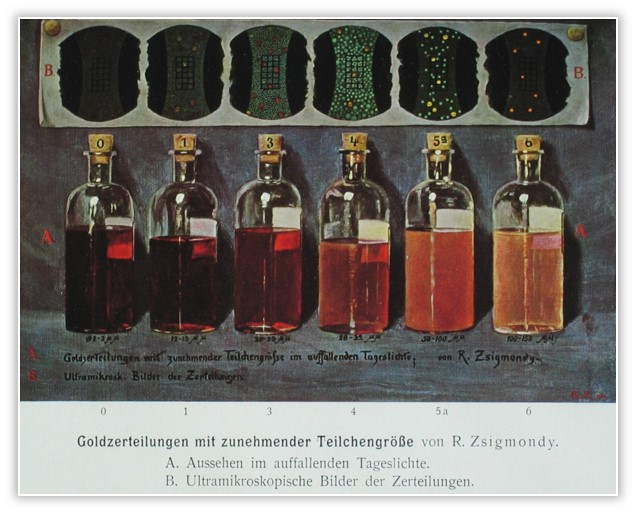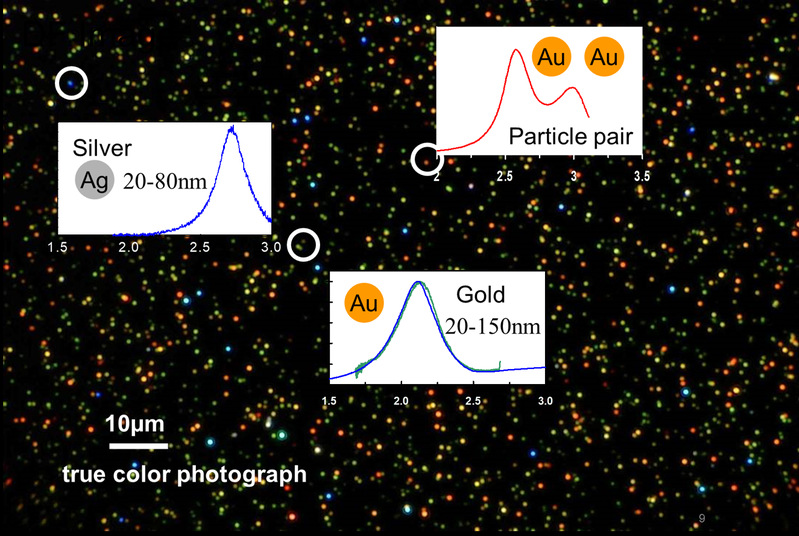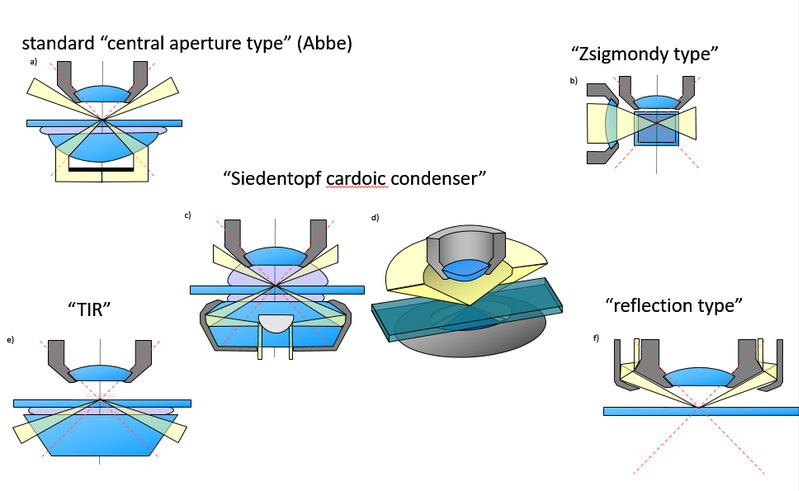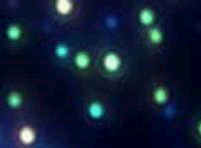2012年本科毕业于武汉大学电子信息学院测控系, 2015年硕士毕业于南开大学电光学院微电子系, 2018年博士毕业于德国美因茨大学物理化学所, 2018-2019年在美因茨大学物理化学所从事助理研究员工作。2019年入职苏州大学物理学院,任副教授与苏州大学优秀青年学者。
主要从事单纳粒子表面等离子激元光谱学、边界有限元光学计算、高光谱暗场光学显微镜的改进与应用等研究。目前已经在纳米光学领域的主流期刊及会议上发表20余篇论文。
代表论文:
“#”共同第一作者,“*”通讯作者
1. Celiksoy S#, Ye W#, Wandner K, Kaefer K, Sönnichsen C (2021):Intensity-Based Single Particle Plasmon Sensing. Nano Letters, 21 (5), 2053–2058.
2. Ye, W., Krueger, K., Sanchez-Iglesias, A., Garcia, I., Jia, X., Sutter, J., Celiksoy, S., Foerster, B., Liz-Marzan, L. M., Ahijado-Guzman, R.*, Soennichsen, C.* (2020): CTAB Stabilizes Silver on Gold Nanorods. Chemistry of Materials, 32 (4), 1650-1656.
3. Wang, C.*, Wu, J., He, Y., Song, Z., Shi, S., Zhu, Y., Jia, Y.*, Ye, W.*(2020): Fully Solid-State Graphene Transistors with Striking Homogeneity and Sensitivity for the Practicalization of Single-Device Electronic Bioassays. Nano Letters, 20 (1), 166-175.
4. Zhu, H., Xie, H., Yang, Y., Wang, K., Zhao, F., Ye, W.*, Ni, W.* (2020): Mapping Hot Electron Response of Individual Gold Nanocrystals on a TiO2 Photoanode. Nano Letters, 20 (4), 2423-2431.
5. Xie, H., Xu, P., Zhao, F., Zhu, H., Wang, K., Ye, W.*, Ni, W.* (2020): Plasmonic thermochromism based on a reversible redox reaction of Ag+/Ag on Au nanorods. Nanoscale, 12 (13), 7301-7308.
6. Lu, X.*, Ye, W.*, You, W., Xie, H., Hang, Z., Lai, Y., Ni, W.* (2020): Collective resonance in helical superstructures of gold nanorods. Physical Review B, 101 (4).
7. Wang, C.*,#, Ye, W.#, Li, Y., Zhu, Y., Lin, Q., He, M.* (2019): Exploiting electrostatic shielding-effect of metal nanoparticles to recognize uncharged small molecule affinity with label-free graphene electronic biosensor. Biosensors & Bioelectronics, 129, 93-99.
8. Ye, W. #, Goetz, M. #, Celiksoy, S., Tueting, L., Ratzke, C., Prasad, J., Ricken, J., Wegner, S. V., Ahijado-Guzman, R., Hugel, T.*, Soennichsen, C.* (2018): Conformational Dynamics of a Single Protein Monitored for 24 h at Video Rate. Nano Letters, 18 (10), 6633-6637.
9. Ye, W., Celiksoy, S., Jakab, A., Khmelinskaia, A., Heermann, T., Raso, A., Wegner, S. V., Rivas, G., Schwille, P., Ahijado-Guzman, R.*, Soennichsen, C.* (2018): Plasmonic Nanosensors Reveal a Height Dependence of MinDE Protein Oscillations on Membrane Features. Journal of the American Chemical Society, 140 (51), 17901-17906.
10. Tueting, L.#, Ye, W.#, Settanni, G., Schmid, F., Wolf, B. A., Ahijado-Guzman, R.*, Soennichsen, C.* (2017): Potassium Triggers a Reversible Specific Stiffness Transition of Polyethylene Glycol. Journal of Physical Chemistry C, 121 (40), 22396-22402.
ACS Nano,Nano Letters,Biosensors and Bioelectronics,Journal of Physical Chemistry C,Nanoscale,Nature Materials 等期刊审稿人。
(1)单纳米粒子暗场成像技术的软件算法研究。
(2)单粒子等离子激元纳米尺应用于单分子的动力学研究。
(3)金纳米粒子多聚体的光学手性研究。
(4)边界有限元模拟计算。
(5)单纳米粒子暗场光谱仪器的开发。
Gold and silver nanoparticles exhibit interesting color effects in the visible spectral range, which is the resonant excitation of a coherent oscillation of the conduction band electrons at a certain frequency or color. This causes the color to be dependent color on the shape and size of the particle. In suspensions, for example, gold nanoparticles appear red in contrast to the usual yellow shimmer. With partial aggregation, the color changes more strongly to dark blue and purple. These phenomena have been known for a long time and the principal has been theoretically understood for over 100 years . We use these properties in a novel way to explore the dynamics of single biological molecules.

Metal nanoparticles, especially those made of gold and silver, exhibit strong absorption in the visible, near-infrared spectral range, which is the result of plasmon excitation. Plasmons are collective coherent oscillations of the conduction band electrons (the so-called electron gas or plasma) against the positively charged ionic lattice. The natural oscillation of this mode in gold can be excited by light with a wavelength of about 530 nm, in silver at about 400 nm. The resonance wavelength depends on the sorroundings of the particle and especially on the shape. By synthesizing particles of appropriate shapes, the resonance wavelength can be tuned to a wide spectral range, even to infrared. The excitation manifests itself in an increased absorption and scattering at the corresponding wavelength, many orders higher than for particles of the same size and shape of other materials. The absorption cross-section can even be higher than the geometrical cross-section. This thousand-fold increased absorption at the plasmon wavelength leads to an intensive color of even very diluted colloidal gold and silver particle solutions. This special property has long been employed in the coloring of glass and is currently being discussed for a number of other applications such as amplification of non-linear optical effects, for example, of Raman scattering, the sensitive detection of biological molecules, and markers in experiments on single biological molecules.

.. is dark field microscopy using white light illumination. The light passes (green arrows) by the objective of the microscope, except for the scattered part which finds its way into the objective. Thus, the particles are seen in bright light in front of a dark background (hence the name dark field) in high contrast (larger than 1:1 000 000). This measuring principle requires a great amount of carefulness in its execution because any distortion that could come from dust particles has to be avoided.

gold and silver particles can be used to determine distances, because the plasmons in two neighboring particles couple and the color changes depend on the distance of the particles. Compared to other sensors based on Förster energy transfers between two dye molecules FRET, the advantage is the indefinite lifetime of the particles that allows for continuous measurements. On the picture, you can see the change in color that occurs when two silver particles come close to each other. First, the single particles are blue but as soon as the second particle binds, the pair appears green. Since both the particles and the pair are well below the resolution of an optical microscope, they are seen as a single dot. This work has been published in Nature Biotechnology 23, 741,2005 and Nano Letters, 2018, 18(10), 6633-6637. http://www.pr.uni-freiburg.de/pm-en/press-releases-2018/dynamics-of-individual-proteins

2020秋季学期,电工学
招收2-3名光学方向的研究生,有MATLAB编程基础优先。欢迎对纳米光学有兴趣的同学加入,有出国读博意向的,可以推荐到德国美因茨大学、德国弗莱堡大学、美国莱斯大学读博。
2012年本科毕业于武汉大学电子信息学院测控系, 2015年硕士毕业于南开大学电光学院微电子系, 2018年博士毕业于德国美因茨大学物理化学所, 2018-2019年在美因茨大学物理化学所从事助理研究员工作。2019年入职苏州大学物理学院,任副教授与苏州大学优秀青年学者。
主要从事单纳粒子表面等离子激元光谱学、边界有限元光学计算、高光谱暗场光学显微镜的改进与应用等研究。目前已经在纳米光学领域的主流期刊及会议上发表20余篇论文。
代表论文:
“#”共同第一作者,“*”通讯作者
1. Celiksoy S#, Ye W#, Wandner K, Kaefer K, Sönnichsen C (2021):Intensity-Based Single Particle Plasmon Sensing. Nano Letters, 21 (5), 2053–2058.
2. Ye, W., Krueger, K., Sanchez-Iglesias, A., Garcia, I., Jia, X., Sutter, J., Celiksoy, S., Foerster, B., Liz-Marzan, L. M., Ahijado-Guzman, R.*, Soennichsen, C.* (2020): CTAB Stabilizes Silver on Gold Nanorods. Chemistry of Materials, 32 (4), 1650-1656.
3. Wang, C.*, Wu, J., He, Y., Song, Z., Shi, S., Zhu, Y., Jia, Y.*, Ye, W.*(2020): Fully Solid-State Graphene Transistors with Striking Homogeneity and Sensitivity for the Practicalization of Single-Device Electronic Bioassays. Nano Letters, 20 (1), 166-175.
4. Zhu, H., Xie, H., Yang, Y., Wang, K., Zhao, F., Ye, W.*, Ni, W.* (2020): Mapping Hot Electron Response of Individual Gold Nanocrystals on a TiO2 Photoanode. Nano Letters, 20 (4), 2423-2431.
5. Xie, H., Xu, P., Zhao, F., Zhu, H., Wang, K., Ye, W.*, Ni, W.* (2020): Plasmonic thermochromism based on a reversible redox reaction of Ag+/Ag on Au nanorods. Nanoscale, 12 (13), 7301-7308.
6. Lu, X.*, Ye, W.*, You, W., Xie, H., Hang, Z., Lai, Y., Ni, W.* (2020): Collective resonance in helical superstructures of gold nanorods. Physical Review B, 101 (4).
7. Wang, C.*,#, Ye, W.#, Li, Y., Zhu, Y., Lin, Q., He, M.* (2019): Exploiting electrostatic shielding-effect of metal nanoparticles to recognize uncharged small molecule affinity with label-free graphene electronic biosensor. Biosensors & Bioelectronics, 129, 93-99.
8. Ye, W. #, Goetz, M. #, Celiksoy, S., Tueting, L., Ratzke, C., Prasad, J., Ricken, J., Wegner, S. V., Ahijado-Guzman, R., Hugel, T.*, Soennichsen, C.* (2018): Conformational Dynamics of a Single Protein Monitored for 24 h at Video Rate. Nano Letters, 18 (10), 6633-6637.
9. Ye, W., Celiksoy, S., Jakab, A., Khmelinskaia, A., Heermann, T., Raso, A., Wegner, S. V., Rivas, G., Schwille, P., Ahijado-Guzman, R.*, Soennichsen, C.* (2018): Plasmonic Nanosensors Reveal a Height Dependence of MinDE Protein Oscillations on Membrane Features. Journal of the American Chemical Society, 140 (51), 17901-17906.
10. Tueting, L.#, Ye, W.#, Settanni, G., Schmid, F., Wolf, B. A., Ahijado-Guzman, R.*, Soennichsen, C.* (2017): Potassium Triggers a Reversible Specific Stiffness Transition of Polyethylene Glycol. Journal of Physical Chemistry C, 121 (40), 22396-22402.
ACS Nano,Nano Letters,Biosensors and Bioelectronics,Journal of Physical Chemistry C,Nanoscale,Nature Materials 等期刊审稿人。
(1)单纳米粒子暗场成像技术的软件算法研究。
(2)单粒子等离子激元纳米尺应用于单分子的动力学研究。
(3)金纳米粒子多聚体的光学手性研究。
(4)边界有限元模拟计算。
(5)单纳米粒子暗场光谱仪器的开发。
Gold and silver nanoparticles exhibit interesting color effects in the visible spectral range, which is the resonant excitation of a coherent oscillation of the conduction band electrons at a certain frequency or color. This causes the color to be dependent color on the shape and size of the particle. In suspensions, for example, gold nanoparticles appear red in contrast to the usual yellow shimmer. With partial aggregation, the color changes more strongly to dark blue and purple. These phenomena have been known for a long time and the principal has been theoretically understood for over 100 years . We use these properties in a novel way to explore the dynamics of single biological molecules.

Metal nanoparticles, especially those made of gold and silver, exhibit strong absorption in the visible, near-infrared spectral range, which is the result of plasmon excitation. Plasmons are collective coherent oscillations of the conduction band electrons (the so-called electron gas or plasma) against the positively charged ionic lattice. The natural oscillation of this mode in gold can be excited by light with a wavelength of about 530 nm, in silver at about 400 nm. The resonance wavelength depends on the sorroundings of the particle and especially on the shape. By synthesizing particles of appropriate shapes, the resonance wavelength can be tuned to a wide spectral range, even to infrared. The excitation manifests itself in an increased absorption and scattering at the corresponding wavelength, many orders higher than for particles of the same size and shape of other materials. The absorption cross-section can even be higher than the geometrical cross-section. This thousand-fold increased absorption at the plasmon wavelength leads to an intensive color of even very diluted colloidal gold and silver particle solutions. This special property has long been employed in the coloring of glass and is currently being discussed for a number of other applications such as amplification of non-linear optical effects, for example, of Raman scattering, the sensitive detection of biological molecules, and markers in experiments on single biological molecules.

.. is dark field microscopy using white light illumination. The light passes (green arrows) by the objective of the microscope, except for the scattered part which finds its way into the objective. Thus, the particles are seen in bright light in front of a dark background (hence the name dark field) in high contrast (larger than 1:1 000 000). This measuring principle requires a great amount of carefulness in its execution because any distortion that could come from dust particles has to be avoided.

gold and silver particles can be used to determine distances, because the plasmons in two neighboring particles couple and the color changes depend on the distance of the particles. Compared to other sensors based on Förster energy transfers between two dye molecules FRET, the advantage is the indefinite lifetime of the particles that allows for continuous measurements. On the picture, you can see the change in color that occurs when two silver particles come close to each other. First, the single particles are blue but as soon as the second particle binds, the pair appears green. Since both the particles and the pair are well below the resolution of an optical microscope, they are seen as a single dot. This work has been published in Nature Biotechnology 23, 741,2005 and Nano Letters, 2018, 18(10), 6633-6637. http://www.pr.uni-freiburg.de/pm-en/press-releases-2018/dynamics-of-individual-proteins

2020秋季学期,电工学
招收2-3名光学方向的研究生,有MATLAB编程基础优先。欢迎对纳米光学有兴趣的同学加入,有出国读博意向的,可以推荐到德国美因茨大学、德国弗莱堡大学、美国莱斯大学读博。
